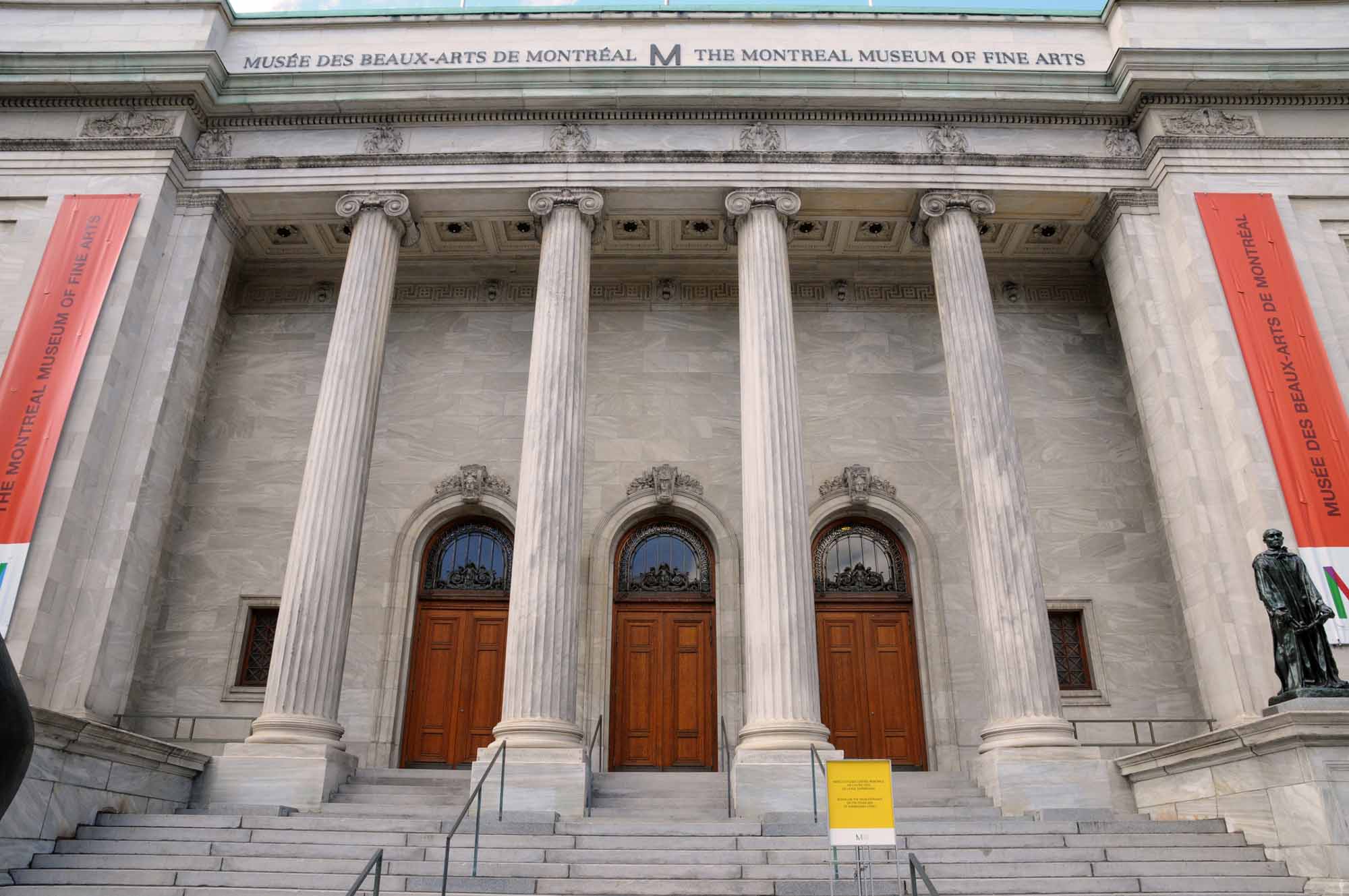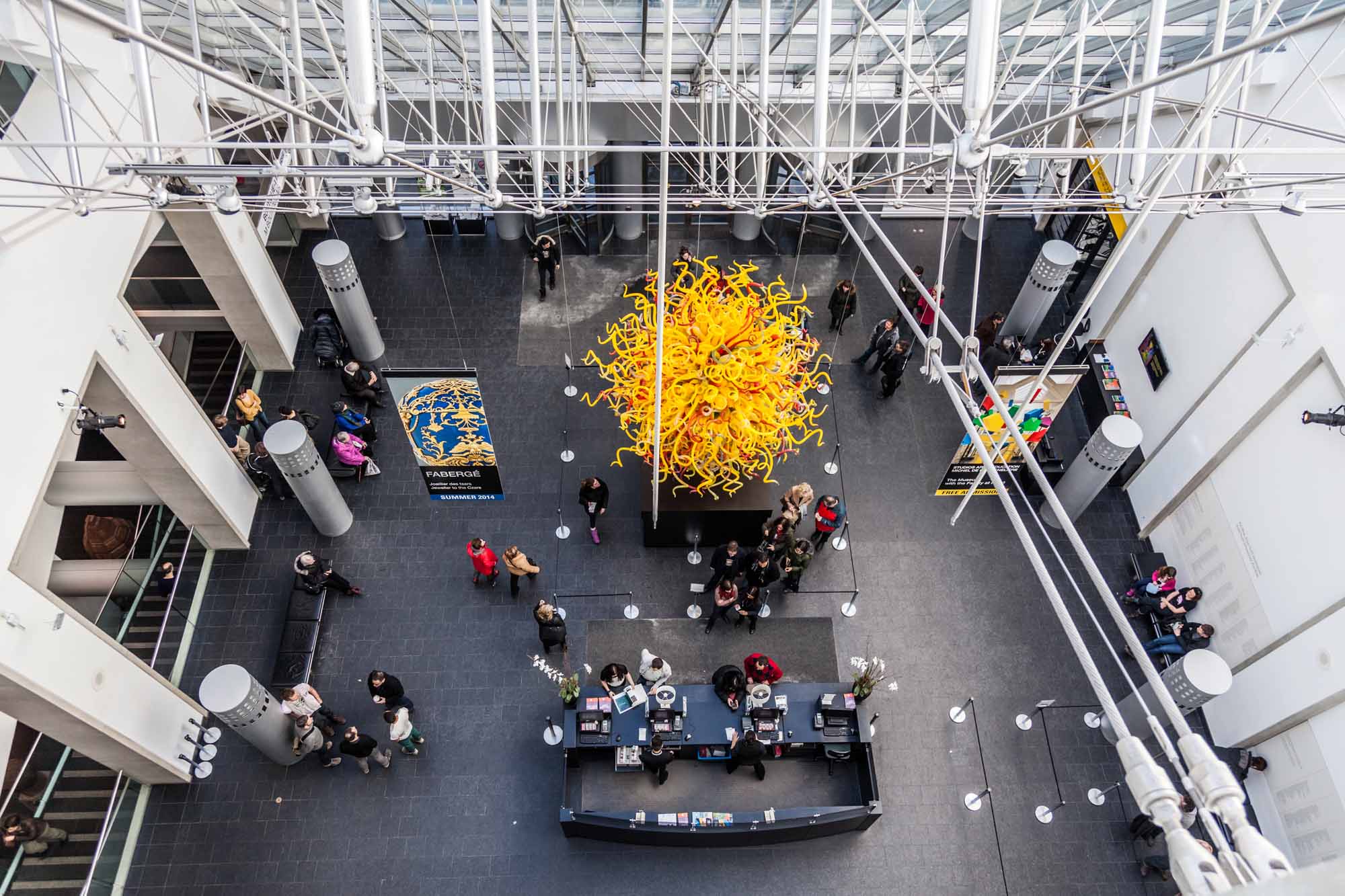Creation and Expansion
First installed in a building on Phillips Square, the museum moved in 1912 to a new building on Sherbrooke St. West. Architects Edward and William Sutherland Maxwell conceived the plan in neoclassical style, much in vogue at that time. In 1976, a new wing by architect Fred Lebensold was opened. In 1991, the opening of its south pavilion, Jean-Noël Desmarais Pavilion (architect Moshe Safdie), added considerable gallery space, educational and support areas to the museum, permitting the institution to exhibit more of the permanent collection and providing much-needed space for its temporary exhibitions. The new pavilion housed a boutique as well as a bookstore, a restaurant and a snack bar.
A fourth pavilion, dedicated to Canadian and Québec art, opened in 2011, along with a concert hall that houses a rare collection of Tiffany stained glass. At that time, the museum’s collections were reinstalled in the three other pavilions, which are dedicated to ancient cultures, European and contemporary art, and decorative arts and design.
In November 2016, the early and modern international art collection was unveiled in a fifth pavilion, which was inaugurated as part of Montreal’s 375th anniversary celebrations. Dedicated to international art and to education, the brand new Michal and Renata Hornstein Pavilion for Peace (built by the consortium of Atelier TAG and Jodoin Lamarre Pratte architectes) presents 750 works and includes the Hornstein family’s donation of some 100 works by Old Masters as well as Ben Weider’s Napoleon collection. The pavilion also features the international atelier for education and art therapy.
Collection and Exhibitions
Over the past 150 years, the museum has assembled one of North America’s finest encyclopedic collections, totalling over 33,000 objects, from antiquity till now, most of them prestigious donations from the great families of Montreal. The collection includes Decorative Arts, Canadian Art and Inuit Art, International Art, Prints and Drawings, Old Master Paintings, and Modern and Contemporary Art, as well as important collections of ancient textiles and English porcelain, and the world’s largest collection of Japanese incense boxes.

In the 1980s, the Montreal Museum of Fine Arts launched a major campaign to conquer a large audience through several large-scale exhibitions. Since then, Pablo Picasso: Meeting in Montréal, Leonardo da Vinci: Engineer and Architect, Marc Chagall, Salvador Dali, The 1920s: Age of the Metropolis, Lost Paradise: Symbolist Europe, Warhol Live: Music and Dance in Andy Warhol’s Work, Van Dongen: Painting the Town Fauve, Pompeii, Toulouse-Lautrec Illustrates the Belle Époque, and Once upon a time… The Western to name a few, have drawn visitors from across Canada and around the world, earning the museum an international reputation. Today, the museum attracts on average over 1,000,000 visitors a year.
The museum presents important temporary exhibitions all year long. Various lectures, films and concerts take place in the auditorium in connection with the exhibitions. Guided tours are offered to the public. In 2011, music was introduced as an integral part of the museum’s programs, providing another perspective on the visual arts through musical audioguides and other innovative activities. These are organized in co-operation with the new Arte Musica Foundation.

 Share on Facebook
Share on Facebook Share on X
Share on X Share by Email
Share by Email Share on Google Classroom
Share on Google Classroom






